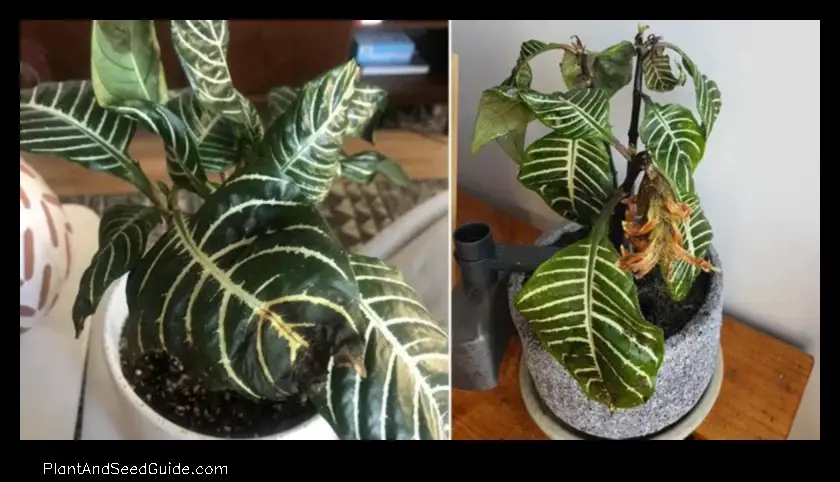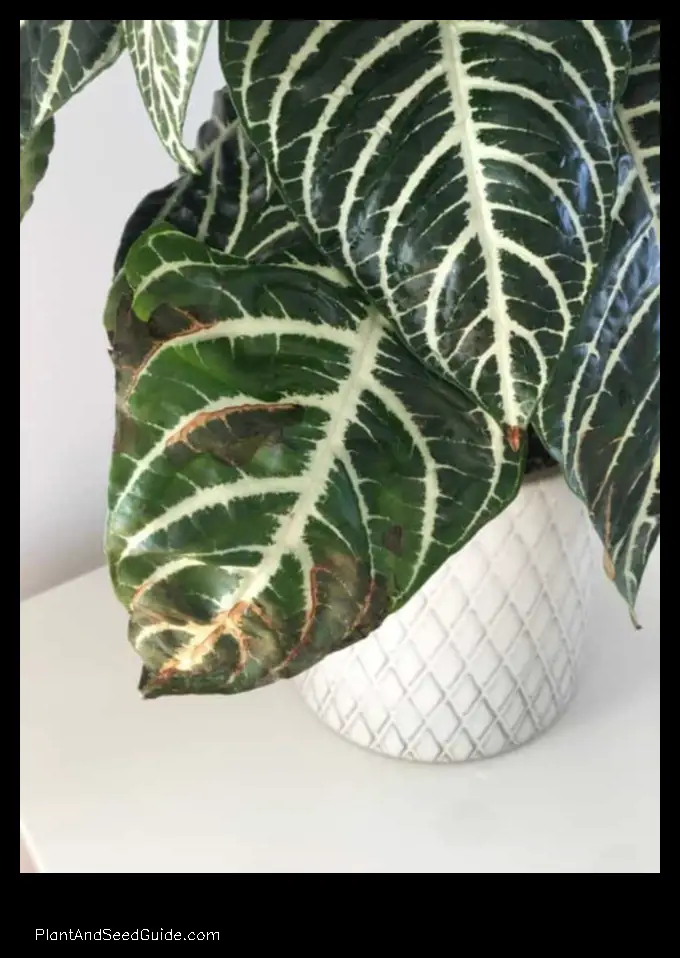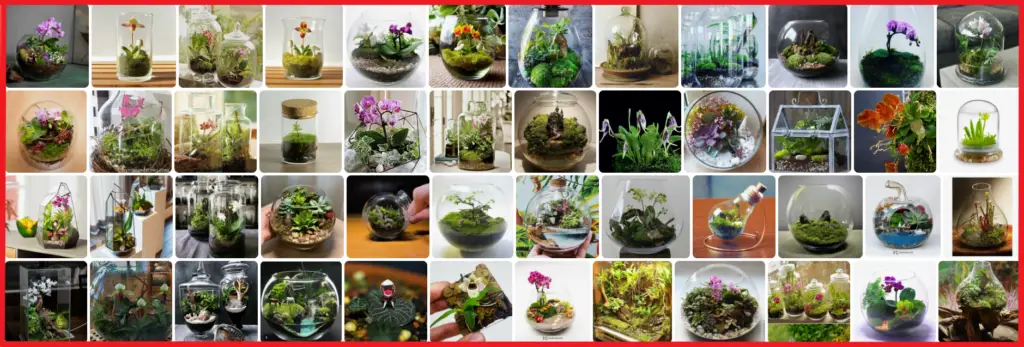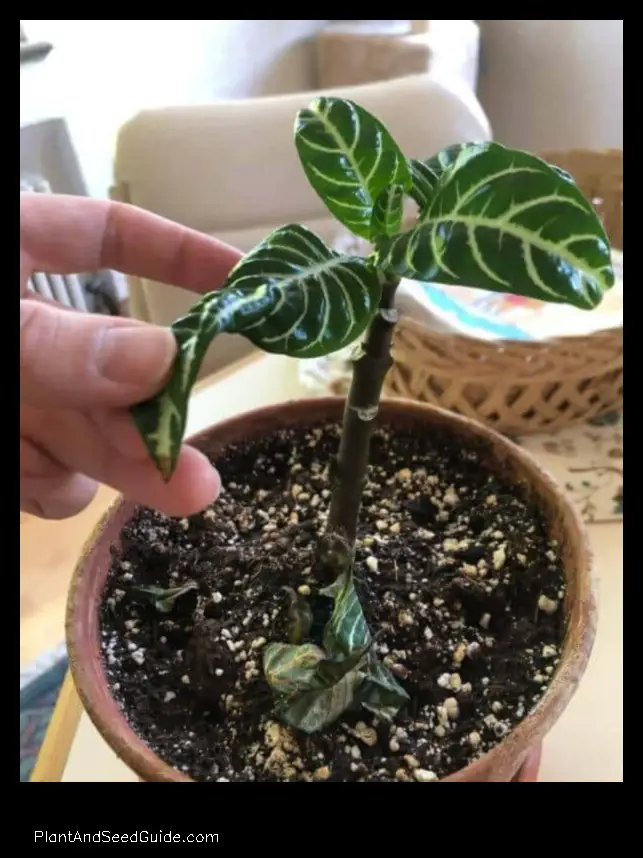

Zebra Plant Turning Brown
Zebra plants are a popular houseplant, but they can sometimes turn brown. This could be due to a number of reasons, such as:
- Overwatering
- Underwatering
- Incorrect light conditions
- Insect infestation
- Disease
If you are seeing brown leaves on your zebra plant, it is important to first identify the cause of the problem. Once you have identified the cause, you can take steps to correct it and save your plant.

Causes of Zebra Plant Turning Brown
Zebra plants can turn brown for a number of reasons. Some of the most common causes include:
- Overwatering
- Underwatering
- Incorrect light conditions
- Insect infestation
- Disease
Let’s take a closer look at each of these causes.
Loading... Seconds Left for
Miniature Orchid Terrarium Gallery!

Overwatering
Zebra plants are susceptible to root rot if they are overwatered. This can cause the leaves to turn brown and eventually fall off. To avoid overwatering, make sure to only water your zebra plant when the soil is dry to the touch. You can also check the moisture level of the soil by inserting a finger into the pot. If the soil is dry, it is time to water your plant.
Underwatering
Zebra plants also need to be watered regularly, but they can also be damaged if they are underwatered. This can cause the leaves to wilt and turn brown. To avoid underwatering, make sure to water your zebra plant regularly, but do not overwater it.
Zebra plants need bright, indirect light to thrive. If they are placed in too much direct sunlight, the leaves can burn and turn brown. To avoid this, place your zebra plant in a spot where it will receive bright, indirect light.
Insect infestation
Zebra plants can be susceptible to a number of insect pests, such as aphids, mealybugs, and spider mites.
These pests can suck the sap out of the leaves, causing them to turn brown and eventually fall off..
To avoid insect infestation, inspect your zebra plant regularly for signs of pests. If you see any pests, treat them with an insecticidal soap or neem oil.
Disease
Zebra plants can also be affected by a number of diseases, such as leaf spot, powdery mildew, and root rot. These diseases can cause the leaves to turn brown and eventually fall off. To avoid disease, make sure to provide your zebra plant with proper care. This includes watering it regularly, providing it with the right amount of light, and keeping it free of pests.
How to Fix Zebra Plant Turning Brown
If you are seeing brown leaves on your zebra plant, there are a few things you can do to fix the problem.
- If you think your zebra plant is overwatered, let the soil dry out completely before watering it again. You can also check the moisture level of the soil by inserting a finger into the pot. If the soil is dry, it is time to water your plant.
- If you think your zebra plant is underwatered, water it thoroughly until the water drains out of the bottom of the pot. You can also mist the leaves of your zebra plant regularly to help them stay hydrated.
- If you think your zebra plant is not getting enough light, move it to a spot where it will receive bright, indirect light.
- If you think your zebra plant has an insect infestation, treat it with an insecticidal soap or neem oil.
- If you think your zebra plant has a disease, treat it with a fungicide.
By following these tips, you can help your zebra plant recover from brown leaves and enjoy its beautiful foliage for years to come.

Prevention_of_Zebra_Plant_Turning_Brown">Prevention of Zebra Plant Turning Brown
The best way to prevent
| Topic |
Features |
| Zebra plant turning brown |
- Overwatering
- Underwatering
- Incorrect light conditions
- Insect infestation
- Disease
|
| Zebra plant brown leaves |
- Wilting
- Brown spots
- Leaf drop
|
| Zebra plant care |
- Water regularly
- Provide bright, indirect light
- Fertilize monthly
- Repot every 2-3 years
|
| Zebra plant watering |
- Water deeply until water comes out of the drainage holes
- Allow the soil to dry out slightly between waterings
|
| Zebra plant light |
- Place in a spot with bright, indirect light
- Avoid direct sunlight, which can scorch the leaves
|
Causes of zebra plant turning brown
Zebra plants can turn brown for a number of reasons, including:
- Overwatering
- Underwatering
- Incorrect light conditions
- Insect infestation
- Diseasei>
How to fix zebra plant turning brown
If your zebra plant is turning brown, there are a few things you can do to fix the problem.
First, check the soil moisture. Zebra plants are susceptible to root rot if they are overwatered. However, they can also be damaged if they are underwatered. Make sure to water your zebra plant regularly, but only when the soil is dry to the touch.
Second, che
ck the light conditions. Zebra plants need bright, indirect light to thrive. If they are placed in too much direct sunlight, the leaves can burn and turn brown. Move your zebra plant to a spot where it will receive bright, indirect light.
Third, check for pests. Zebra plants can be susceptible to a number of insect pests, such as aphids, mealybugs, and spider mites. These pests can suck the sap out of the leaves, causing them to turn brown and eventually fall off. If you see any pests on your zebra plant, treat it with an insecticidal soap or neem oil.
Fourth, check for disease.
Zebra plants can also be affected by a number of diseases, such as leaf spot, powdery mildew, and root rot..
These diseases can cause the leaves to turn brown and eventually fall off. If you suspect that your zebra plant has a disease, treat it with a fungicide.
By followin
g these tips, you can help to fix your zebra plant and prevent it from turning brown again.
Prevention of zebra plant turning brown
To prevent your zebra plant from turning brown, you can follow these tips:
Water your plant regularly, but do not overwater it. Zebra plants are susceptible to root rot if they are overwatered. Allow the soil to dry out slightly between waterings.
Provide your plant with bright, indirect light. Zebra plants need bright, indirect light to thrive. Avoid placing them in direct sunlight, as this can cause the leaves to burn and turn brown.
Fertilize your plant regularly with a balanced fertilizer. Zebra plants need fertilizer to grow and thrive. Feed your plant with a balanced fertilizer once a month during the growing season.
Inspect your plant regularly for pests and diseases. Zebra plants can be susceptible to a number of pests and diseases, such as aphids, mealybugs, and spider mites. Inspect your plant regularly and take steps to treat any pests or diseases that you find.
ear:both; margin-top:0em; margin-bottom:1em;">
See also
Red Sentinel Japanese Maple: Guarding Your Garden
By following these tips, you can help to prevent your zebra plant from turning brown.
Common problems with zebra plants
Zebra plants are relatively easy to care for, but they can still be susceptible to a number of problems. Here are some of the most common problems with zebra plants:
- Overwatering
- Underwatering
- Incorrect light conditions
- Insect infestation
- Diseasei>
If you are seeing any of these problems with your zebra plant, it is important to take steps to correct them as soon as possible. This will help to prevent further damage to your plant and keep it healthy.
How to care for zebra plants
Zebra plants are relatively easy to care for, but there are a few things you can do to ensure that they thrive.
Watering: Z
ebra plants need to be watered regularly, but they should not be overwatered. Allow the soil to dry out slightly between waterings.
Light: Zebra plants need bright, indirect light to thrive. If they are placed in too much direct sunlight, the leaves can burn.
Temperature: Zebra plants prefer warm temperatures, between 65 and 80 degrees Fahrenheit. They can tolerate some cold, but if the temperature drops below 50 degrees Fahrenheit, the plant may suffer.
Fertilizer:
Zebra plants do not need to be fertilized often. A light application of fertilizer once a month during the growing season is usually sufficient.
Pests and diseases: Zebra plants are susceptible to a number of pests and diseases, such as aphids, mealybugs, and spider mites. If you notice any pests or diseases on your plant, it is important to treat them immediately.
By following these tips, you can help your zebra plant thrive and enjoy its beautiful foliage for years to come.




